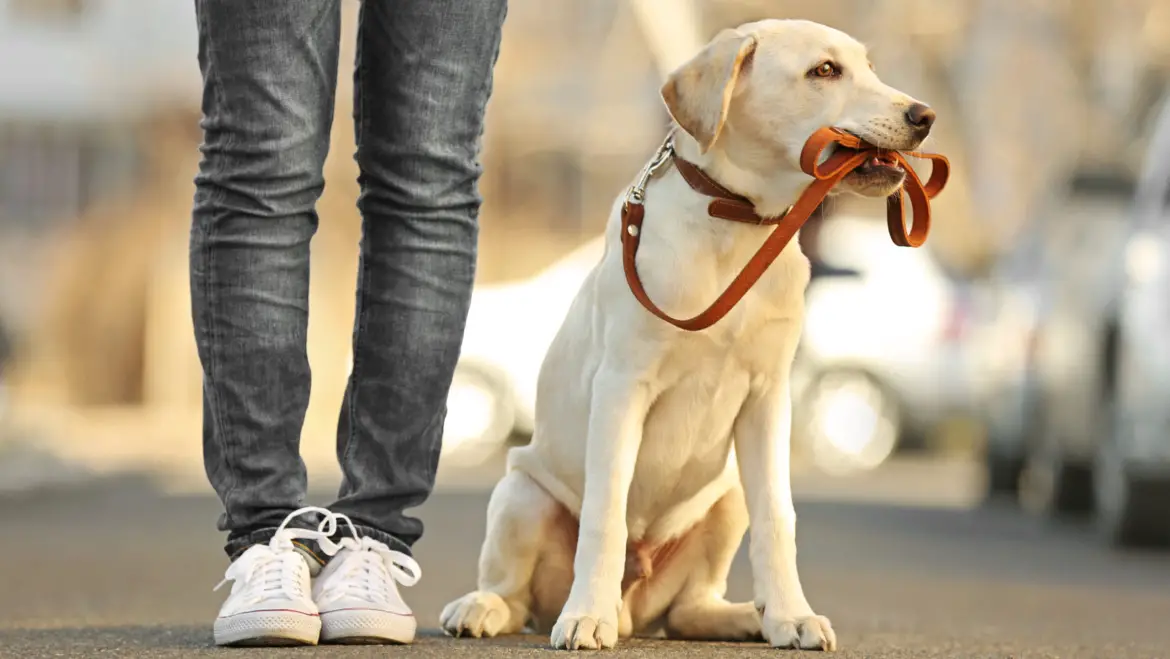Are you tired of worrying about your furry friend running off-leash and not responding to your commands? Do you want to enjoy a carefree stroll with your pup without the stress of them wandering away?
Well, fear no more! In this expert guide, we’ll reveal the secrets to mastering off-leash walking like a pro. From basic obedience training techniques to tips on maintaining focus and attention, get ready to transform your canine companion into the ultimate walking buddy.
So grab those treats and let’s hit the pavement – it’s time for some serious doggy bonding!
Introduction to Off-Leash Walking
Off-leash walking is one of the most freeing and bonding experiences you can share with your canine companion. But before you ditch the leash and hit the pavement, there are a few things you should know. In this article, we’ll introduce you to the basics of off-leash walking, including how to get started and some expert advice for training your pup.
Off-leash walking is exactly what it sounds like – letting your dog walk without a leash. This can be a great way to let your dog explore and get some exercise, while still staying safe. But before you head out leash-free, there are a few things you should keep in mind.
First, make sure your dog is well-trained on basic obedience commands like sit, stay, come, and down. These will be important for keeping your dog under control when they’re off their leash. You should also have a solid recall – meaning your dog will come to you when called – as this can help prevent them from running off or getting into trouble.
Next, gradually introduce your dog to being off their leash in safe areas with low distractions, like your backyard or a quiet park. Start with short periods of time and gradually increase as they get more comfortable. And always have treats on hand to reward good behavior!
Finally, never put yourself or your dog in a situation where they may be uncomfortable or in danger. If you’re unsure about whether an off-leash
Tools and Techniques for Off-Leash Training
Whether you’re looking to train your dog for competition obedience or simply want them to be well-behaved on walks and around other people and dogs, off-leash training is an essential skill. Here are some tools and techniques to help you get started:
1. collar and leash – The first step in any training is to have a properly fitting collar and leash. This will ensure that your dog is comfortable and won’t be able to slip out of their collar. You’ll also need a 6-foot leash for off-leash training.
2. treats – Food is one of the best motivators for dogs, so having plenty of high-value treats on hand is crucial for successful training.
3. Clicker – A clicker is a small handheld device that makes a clicking sound when pressed. This classic operant conditioning tool is used to mark desired behavior so that your dog knows exactly when they’ve done something right.
4. target stick – A target stick can be used as an alternative to a clicker, or in addition to one. It’s a long, thin stick with a piece of tape or other marker at the end, which you can use to guide your dog into the correct position or behavior.
5. crate – A crate can be a useful tool for both house-training and general management of your dog while you’re working on their off-leash training. It’s important to choose the right size crate and
Setting Rules and Boundaries
One of the most important things you can do when training your dog to walk off-leash is to set rules and boundaries. This will help your dog understand what is expected of him, and give him a sense of security. Here are some tips for setting rules and boundaries:
1. Be consistent with your commands. If you tell your dog to “heel” one day and then allow him to walk ahead of you the next day, he will be confused.
2. Set clear boundaries for where your dog is allowed to go. If there are areas of your property that you don’t want your dog to access, make sure he knows this by using visual cues like fencing or gates.
3. Reward your dog for obeying the rules. When he heel by your side or stay within the boundaries you’ve set, praise him and give him a treat. This will reinforce good behavior and help him understand what is expected of him.
Enforcing Positive Reinforcement
When you’re working on off-leash walking with your canine companion, it’s important to enforce positive reinforcement. This means rewarding your dog for good behavior, instead of punishing them for bad behavior. Positive reinforcement will help your dog understand what you want from them, and it will also help keep them motivated to learn.
One way to enforce positive reinforcement is to use treats. When your dog walks by your side without pulling, give them a treat. This will show them that they are doing what you want, and they will be more likely to continue doing it if they know there is a reward involved. You can also use verbal praise as a form of positive reinforcement – letting your dog know that they are being good can be just as effective as giving them a treat.
Another way to enforce positive reinforcement is through clicker training. Clicker training is a type of operant conditioning which relies on positive reinforcement – in other words, the dog is rewarded for performing the desired behavior. When using clicker training, you will need to find something that your dog really enjoys as a reward (treats usually work well).
Once you have their attention, simply click the clicker when they do something you want them to do (such as walking by your side without pulling). After a few repetitions, they should start to associate the sound of the clicker with getting a reward, and they will be more likely to perform the desired behavior when they hear it.
Building Endurance Through Exercises
One of the best ways to build your dog’s endurance is through exercise. Just like humans, dogs need to get their heart rate up and move their muscles in order to stay healthy and fit. And, just like humans, the more active your dog is, the higher his or her endurance will be.
There are a number of different ways you can exercise your dog to help build endurance. One option is to take him or her on long walks or runs. If your dog isn’t used to this much activity, start slowly and increase the distance and pace gradually over time.
You can also try playing fetch or frisbee; both of these activities are great for getting your dog’s heart rate up and providing a good workout. In addition to helping improve endurance, regular exercise can also have other benefits for your dog such as helping to maintain a healthy weight, reducing stress levels, and improving overall joint health. So get out there and start exercising with your furry friend today!
When Can I ExpectResults?
If you’re starting from scratch with your off-leash training, it’s important to be realistic about your expectations. Like with any other behavior, it will take time and patience to train your dog to walk calmly by your side without a leash. However, with consistency and positive reinforcement, you can expect to see progress within a few weeks. Here are a few things to keep in mind as you work towards teaching your dog to walk off-leash:
1. StartSlowly: When first introducing your dog to off-leash walking, take things slow. Let them get used to the feeling of being unrestrained while still keeping a close eye on them. Once they seem comfortable, you can begin working on longer distances and more distractions.
2. Be Consistent: It’s important to be consistent with your training. If you only allow your dog to walk off-leash sometimes, they will quickly become confused about the rules and expectations. Always use the same commands and reward system so that they know what is expected of them.
3. Reward Good Behavior: As your dog begins to understand the expectations of off-leash walking, make sure to praise and reward them when they do well. This will reinforce their good behavior and motivate them to continue listening even when there are distractions present.
Best Practices for Effective Off -Leash Walking
Teaching your dog to walk off-leash can be a great way to enjoy some quality time together while getting some exercise. However, it’s important to keep safety in mind and follow some best practices to ensure a safe and enjoyable experience for both you and your furry friend. Here are some tips for effectively walking your dog off-leash:
1. Start with small, controlled steps. If your dog is not used to walking off-leash, start by letting them walk with you on a leash in a quiet area with little distractions. Once they are comfortable walking next to you, you can gradually increase the length of the leash until they are comfortable walking off-leash.
2. Use positive reinforcement. Be sure to praise your dog and give them treats when they are walking calmly by your side while off-leash. This will help reinforce good behavior and let them know that they are doing what you want them to do.
3. Be aware of your surroundings. Pay attention to your dog at all times and be aware of their body language in case they see or smell something that interests them and might make them want to run off. It’s also important to be aware of your surroundings so you can anticipate any potential hazards, such as cars or other animals.
4. Respect other people’s property rights. When walking off-leash, be sure not to trespass onto private property or disturb wildlife habitats without permission from the owner
Conclusion
Off-leash walking is an important skill for any canine companion. With the help of some expert advice, you can be well on your way to mastering off-leash walking with your furry friend.
Researching and understanding the basics of canine behavior, training with positive reinforcement techniques, and being consistent in your approach are all key components of success. Lastly, be sure to always have patience and remain calm when working towards getting that perfect heel!





Add Comment